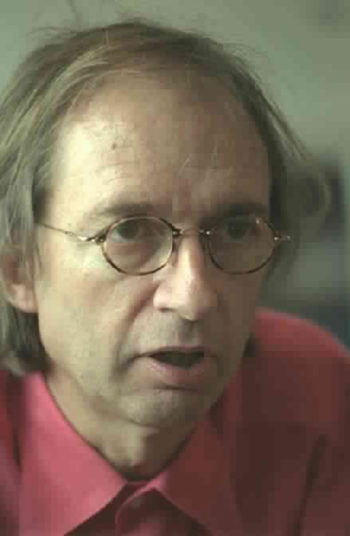Eduardo Subirats was born in Barcelona in 1947. His father was a survivor of the concentration camps of Francoist Spain. His mother’s family escaped National Socialist Germany in 1937. He completed his secondary education at Barcelona’s Deutsche Schule, and entered medical school at the University of Barcelona. After his first experience as a medical professional, during an internship at the Psychiatrische Universitätsklinik in Basel in 1968, he left the field of medicine, and in 1972 he enrolled at the University of Paris-Vincennes, where he studied with Gilles Deleuze and Jean-François Lyotard. Between 1975 and 1979, he attended Klaus Heinrich’s lectures at the Religionswisseschaftliches Institut of the Free University at Berlin, and in 1979 he was appointed assistant professor of aesthetics at the Barcelona School of Architecture. Between 1981 and 1983, he conducted research at Columbia University on the American architect Hugh Ferriss, with Kenneth Frampton as adviser. From 1984 to 1987, he was professor of art, architecture, and the aesthetic theories at the University of São Paulo and the University of Campinas. In the following years, he worked in Berlin, New York, Madrid, São Paulo, México and Caracas as a professor, writer and speaker.
“My formative years involved me in the fields of psychiatry, philosophy and were marked by an intense affinity for phenomena related to the aesthetic experience and art history. My doctoral thesis, El alma y la muerte, contemplated the crisis of civilization, starting with a critique of scientific rationalism, a reconstruction of the aesthetic of romanticism and expressionism, and a reformulation of critical theory.”
During his educational career, Subirats wrote a series of essays on a variety of philosophical, artistic, and political topics: the reconstruction of the negative consciousness in the landmark works of German Romanticism (Figuras de la conciencia desdichada: 1979), the restoration of the romantic concept of nature in modern European art (La flor y el cristal, 1987), a critique of the antimodern ideologies triggered by the Spanish Counter Reformation (La ilustración insuficiente, 1981), and a critique of postmodern spectacle (La cultura como espectáculo, 1988; Linterna mágica, 1997).
“In the ‘80s and the ‘90s, I turned my attention to the philosophical, artistic and literary culture of northern Europe, I became involved in the Latin American world and its memories, and at the same time I was following modern aesthetic expressions. These crisscrossing between Europe, North America and South America gave rise to a transatlantic perspective. From Germany, I took its humanistic tradition; from France, its postwar avant-garde; from the Iberian Peninsula, its medieval Jewish and Islamic heritage. In Latin America, I discovered a creative vitality of popular and artistic culture manifested in innumerable forms and colors. In Princeton and New York, I wrote my most important essays. My disagreements with the intellectual landscapes of these three continents have been as profound as my identifications with them.”
The publication of El continente vacío in 1993 was met with a hostile response in Madrid. That same year, Subirats was invited to join the Department of Romance Languages and Literatures at Princeton. The last foreign writers with an independent intellectual and critical profile to have been welcome in the Humanities in United States academia were the 1936 exiles of the Spanish Civil War. His appointment at Princeton marked the beginning of an intellectually prolific period for Subirats, and saw the publication of his five major books: El continente vacío, Paraíso, Memoria y exilio, Mito y literatura and An Essay on Love. This period was also marked by a progressive distancing from Europe and a growing approach towards Latin America and Asia.
“I proposed four perspectives of reflection: the critique of patriarchal reason and of the political theology of the Occidental empires; artistic and literary hermeneutics open to its mythological and religious roots; a philosophy of history sensitive to the contemporary processes of destruction and decadence; and a new definition of humanism based on the most ancient mythological, religious and philosophical traditions of human history.”
The attack on the World Trade Center in New York in 2001 and the wars that followed affected Subirats to the point that he decided to leave United States. He attempted to return to Berlin and São Paulo, but without success. In 2012, he became a United States citizen. During the first two decades of this century, he gave a number of presentations at conferences in Germany, Brazil, Mexico, Columbia, Perú, Chile, and the United States. At these conferences, he focused on three objectives: a reform of the academic system, a project of renovation of the Latin American and European historical memory, and a reformulation of critical theories of the twentieth century. In these gloomy two decades, Subirats founded two Latin American literary journals—Crisis y crítica and Almanaque literario—and wrote a series of essays and anthologies, the most important ones being: La existencia sitiada (2006), Proceso a la civilización (2011), El universo dividido (2015), Una edad de destrucción (2016), Enlightenment in an Age of Destruction (2018, with Ch. Britt and P. Fenn) and Crisis y crítica (2019).
